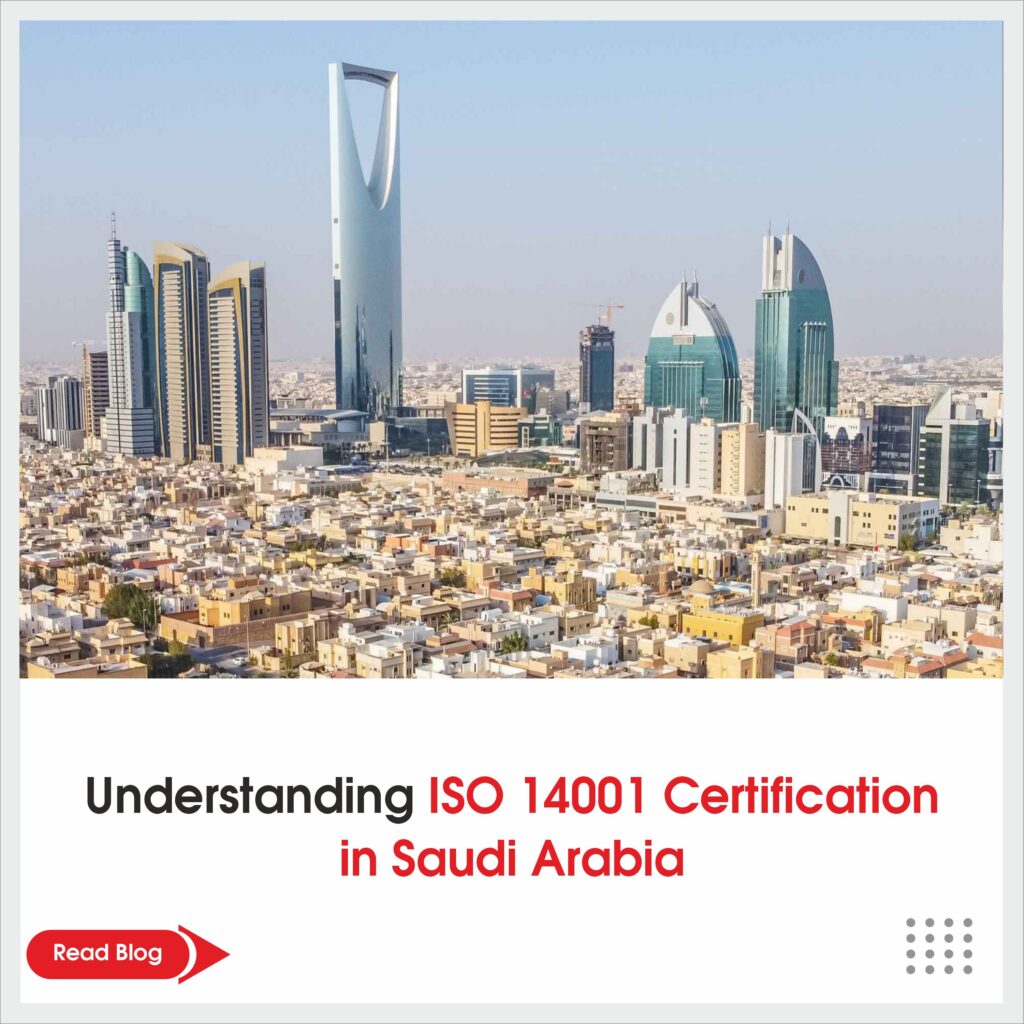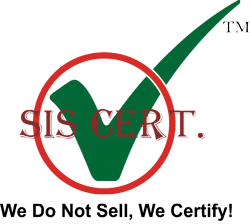Understanding ISO 14001 Certification in Saudi Arabia

ISO 14001 Certification is a globally acknowledged standard that defines the requirements for a successful environmental management system (EMS). In Saudi Arabia, securing this certification is growing in significance for organizations aiming to showcase their dedication to environmental sustainability and adherence to regulatory standards. The ISO 14001 standard offers a structure that assists organizations in recognizing, controlling, observing, and enhancing their environmental performance. It motivates businesses to evaluate how their activities affect the environment and to adopt strategies to reduce any adverse impacts. This involves handling waste, minimizing energy usage, and guaranteeing sustainable resource management. In Saudi Arabia, companies in different sectors are embracing ISO 14001 Certification to improve their operational effectiveness as well as to satisfy the demands of stakeholders who emphasize sustainability. The certification process entails a comprehensive assessment of an organization’s EMS conducted by licensed third-party auditors. After obtaining certification, organizations need to consistently oversee and enhance their systems to ensure adherence to the standards established by ISO. Obtaining ISO 14001 Certification can additionally offer competitive benefits in the marketplace. It boosts a company’s standing with consumers who are more conscious of environmental matters and prefer brands that exhibit corporate social responsibility. Moreover, it could result in savings by managing resources more efficiently. Preparing for ISO 14001 Certification in KSA for environmental management system Preparing for ISO 14001 Certification in the Kingdom of Saudi Arabia (KSA) requires a methodical strategy for establishing a successful environmental management system (EMS). Organizations need to first grasp the criteria established by the ISO 14001 standard, which highlights ongoing enhancement and adherence to environmental laws. The first step entails performing an extensive gap analysis to recognize current practices and areas needing improvement. This examination must include every facet of the organization’s activities that affect the environment. Subsequently, it is essential to create an environmental policy that demonstrates the organization’s dedication to sustainability and adherence to regulations. Training workers on EMS concepts and practices proves essential for building an environmentally conscious culture inside the organization. Furthermore, companies should put in place procedures for monitoring, measuring, and assessing their environmental performance against predetermined goals. Documentation is critical to getting ISO 14001 certification; hence, reliable records of processes, rules, and performance indicators are required. Engaging with stakeholders throughout the process helps boost credibility and support. In the end, companies must plan for an external audit by a qualified authority to ensure that their EMS meets ISO 14001 criteria. By following these rules, businesses in Saudi Arabia can not only gain accreditation but also positively contribute to the region’s environmental sustainability efforts. Achieving ISO 14001 Certification for environmental management system Achieving ISO 14001 certification for an environmental management system (EMS) is a significant step towards enhancing your organization’s sustainability practices. This internationally recognized standard provides a framework for managing environmental responsibilities effectively, ensuring that organizations minimize their negative impact on the environment. To begin the certification process, organizations must first establish an EMS that aligns with the ISO 14001 requirements. This involves conducting a thorough assessment of current environmental practices, identifying areas for improvement, and setting measurable objectives. Engaging stakeholders and promoting awareness throughout the organization is crucial to foster a culture of environmental responsibility. Once the EMS is in place, organizations must implement it consistently while monitoring performance through regular audits and reviews. These evaluations help identify non-conformities and areas requiring corrective actions. After demonstrating compliance with ISO 14001 standards over time, organizations can proceed to undergo an external audit by a certified body. Achieving ISO 14001 certification not only enhances an organization’s reputation but also leads to improved regulatory compliance, reduced waste management costs, and increased operational efficiencies. Furthermore, it signals to customers and stakeholders that your organization is committed to sustainable practices and continuous improvement in environmental performance. Step-by-Step Implementation Process Steps to Implement ISO 14001: A Comprehensive Guide Implementing ISO 14001, the worldwide renowned Environmental Management System (EMS) standard, necessitates a structured approach to achieve optimal environmental performance and compliance. This is how the process works: Establishing Context – The first step is to understand the organization’s environmental goals, regulatory obligations, and operational implications. It is critical to define the scope of the EMS and establish clear guidelines for its execution. Identifying environmental aspects and impacts – Organizations must analyze their activities, products, and services to determine how they interact with the environment. This includes assessing energy use, waste output, emissions, and resource consumption to estimate their possible environmental impact. Conducting Risk and Opportunity Assessments – Analyze the risks and opportunities associated with environmental issues, such as compliance duties and potential improvements. This stage aids in prioritizing measures to reduce risks and capitalize on opportunities to improve environmental performance. Draft an Environmental Management Plan – Based on the evaluation, an actionable strategy is developed to address major environmental issues. This strategy outlines the objectives, targets, and measures for effectively managing impacts. It also entails delegating tasks and responsibilities to maintain responsibility. Implementing Controls and Procedures – Build systems and controls to manage environmental risks. This includes putting rules in place to manage waste, increase energy efficiency, avoid pollution, and conserve resources. Compliance with legal and regulatory obligations is a top priority at this time. Creating Awareness and Training Employees – Employee involvement is critical to the success of an EMS. Conduct training programs to educate employees on their roles in achieving environmental goals. Topics such as waste separation, energy conservation, and emergency response protocols should be addressed. Conducting Internal Audits – Regular internal audits assist ensure that the EMS is functioning properly and meeting ISO 14001 requirements. These audits uncover gaps, non-conformances, and areas for continual improvement. Management Review – Top management is important in reviewing the EMS. Periodic assessments ensure that the system stays successful, in line with the organization’s aims, and adaptable to changes in regulatory or operational situations. Implementing ISO 14001 aids organizations in minimizing their environmental effects, enhancing operational efficiency, and showcasing dedication
